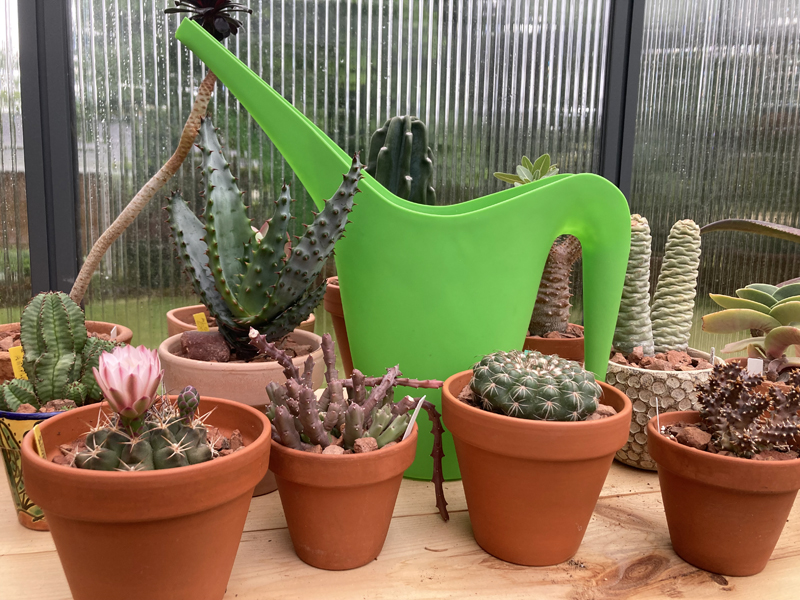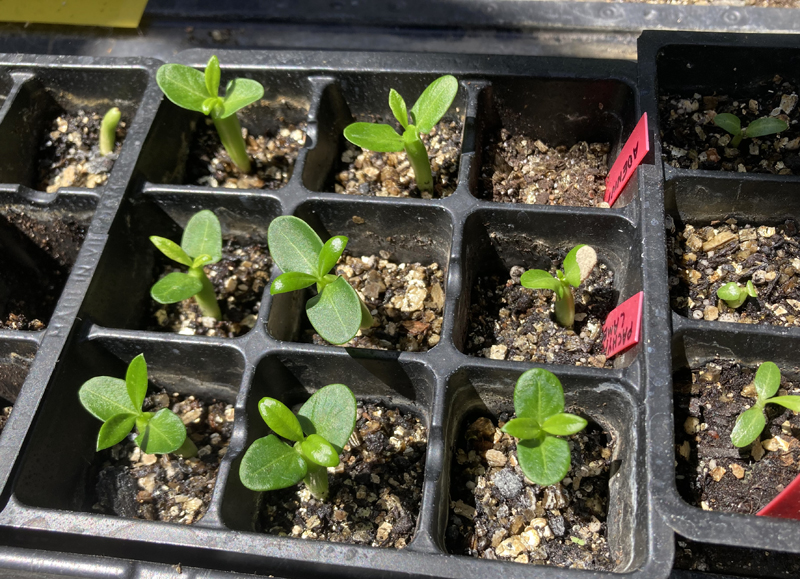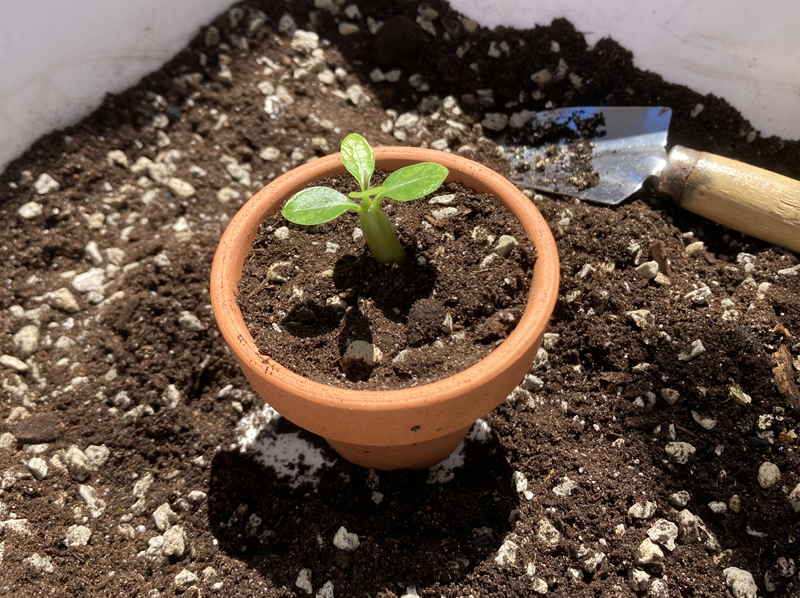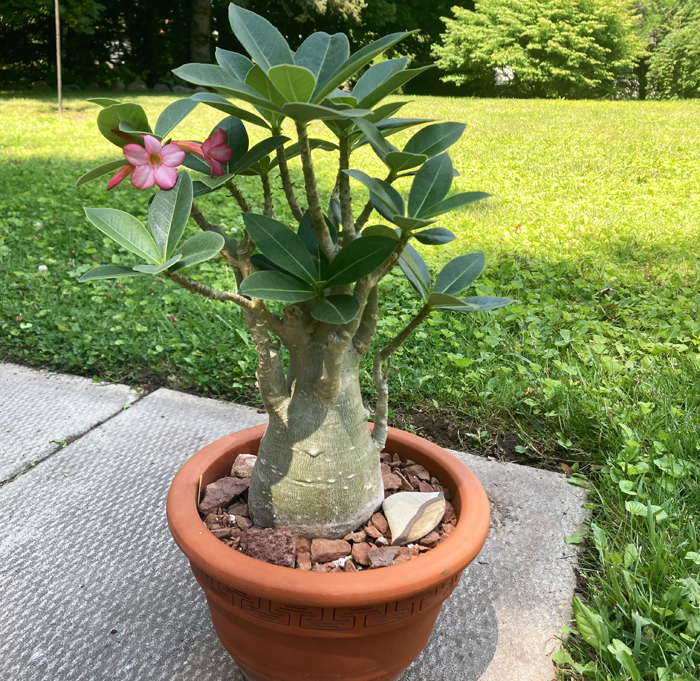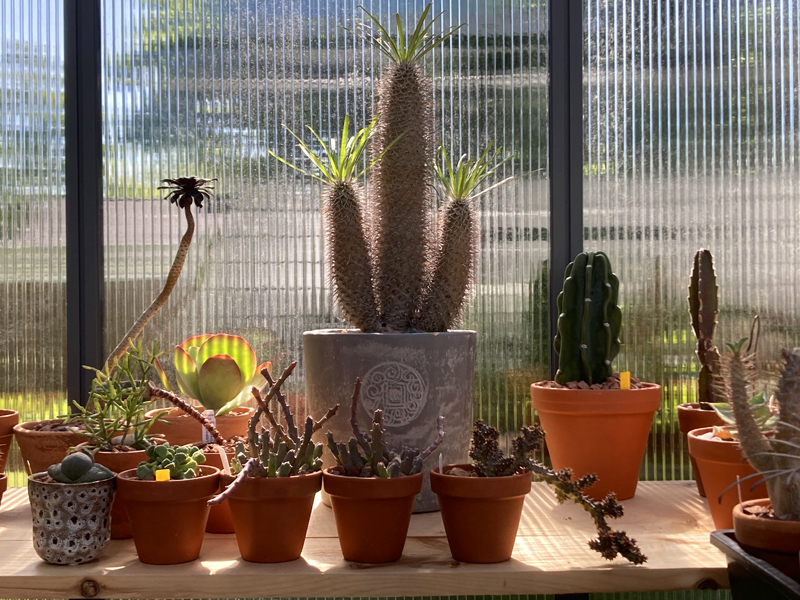
So, you have a new succulent you’ve just bought or been given, or maybe you have a succulent that you’ve owned for years. How do you know when it needs repotting?
There are three main reasons to repot a succulent:
- You have a new succulent.
- The plant has outgrown the pot it is currently in.
- To refresh the soil/potting medium.
Before we look at these reasons in more detail, the first thing to remember is that most succulents like their roots a little confined. The goal is to mimic their natural environment as much as possible, and in the wild many succulents grow in harsh environments, their roots often snug between rocks in well draining soil. They have adapted to be able to draw water into their roots quickly, as it usually won’t be in the soil very long. Therefore, if your plant is in a pot with lots of extra soil space around the roots, that soil is more likely to dry slowly which can lead to root rot (or just an unhappy succulent in general!)
It is also important that your pot always have at least one drainage hole so the soil dries out quickly. Clay/terra cotta pots are a good choice, as opposed to plastic, since clay “breathes”, which aids in water transpiration from the soil.
Let’s talk about the three repotting reasons noted above, in more detail:
New plant:
Many plants purchased at big box stores (Home Depot, etc.) or large nurseries come from commercial wholesalers where they are grown in plastic pots in a growing medium containing a lot of peat. These plants are from optimally temperature and light controlled greenhouses and were getting regular doses of high nutrient fertilizers to make them grow fast. Unfortunately, a heavy peat-based soil is not the best growing medium for the continued health of your succulent as it gets larger. Peat often becomes hydrophobic (repels water) over time and is not easy to saturate, so water may just run down the inside of the pot and out the drainage hole, not coming into contact with roots much at all.

In addition, plants that have been sitting in a store or nursery for months, after probably being driven across the country in a truck, may have been exposed to a variety of pests. Transplanting them soon after bringing them home, as well as isolating them from your other plants for at least a week, can help mitigate pest problems. I’ve seen fungus gnats (which lay their eggs in soil) in too many nursery and store plant collections not to change the soil on any purchases as soon as I bring a new plant home.
Outgrowing pot:
A succulent will need transplanting into something larger as it gets too big for the pot it’s in. A rule of thumb is to go one pot size bigger each time. So, if your plant is in a 2.5 inch pot you should go to a 3.5 inch pot when you transplant. If you see roots coming out of the pot’s drainage hole, that’s a good clue that the plant is outgrowing the pot.
Refresh of potting medium:
Another benefit of repotting is that the soil/potting medium gets replaced, providing fresh nutrients and minerals to the roots. The guideline is to transplant approximately every two years. This is not a hard and fast rule and if you instead do it in 18 months or in three years, your plant will usually not be mad at you! Succulents are fairly easy-going citizens of the plant world.







